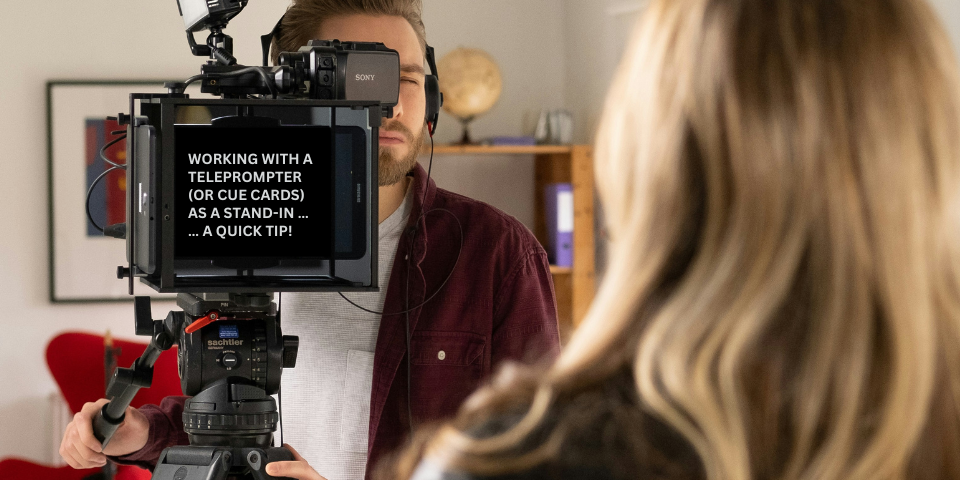I have two propensities whose concurrence in a single life proves a most unfortunate confluence: standing in and marathon training.
Trying to pull off one is tough enough. Trying to pull off both in the same time frame? Brutal. The word “impossible” also sounds about right.
In 2011, I worked as a stand-in on two films and one television show while training for two November marathons–the NYC Marathon and the Philadelphia Marathon.
I ran NYC in 3:13:49. Two weeks later, I ran Philly in 3:07:47.
Here’s how I did it.
Backstory
Back in 2010, I ran both the NYC and Philly Marathons in the same month. I didn’t do all that well, mostly because I didn’t train enough and I spent my time doing other things than training when I should have. In 2011, I had a little more time for myself, so I wanted to see if I could do both of these marathons again–but run them a lot better.
I set my goals fairly ambitiously for 2011. I set my NYC goal at sub-3:10. I set my Philly goal at sub-3:00. Both of these times would qualify me for the Boston Marathon, which is one of the coveted goals many marathon runners have.
Given those goals, I figured out a few things:
- I’d have to train
- fairly regularly
- I’d have to keep my mileage high
- yet also rest
Training would commence in the first week of July. Pre-training would have to be before then.
But then I went and got cast as a stand-in for a lead actor in the film Gods Behaving Badly. That gig started up in mid-July but was going to get serious in August and September–prime times for training.
What was I going to do? How on Earth could I achieve my ambitious marathon goals and stand in regularly on a film?
What I Figured Out
When I train, I roughly follow training schedules on the New York Road Runners website, adapted from The Runners Handbook and The Competitive Runner’s Handbook. I’d graduated over the years to using the Advanced Marathoner B schedule, the most difficult schedule. But over the years I’d learned something about those schedules:
- I don’t have to train 6-7 days a week, as the schedules recommend
- I learned I personally can get by on 5 good training days and 2 days of rest and still exceed my goals
I figured out that I wouldn’t be training 6-7 days a week if I couldn’t. I could get by on 5. This meant running 3 weekdays plus Saturday and Sunday. Ideally this meant also running Tuesday-Thursday, giving me rest from a high-mileage weekend (Monday) and rest before a high-mileage weekend (Friday).
This time out, I wanted to up my per-run mileage. In 2009 (when I ran my fastest marathon), my typical run was 8.3 miles. This year, I was curious if I could manage 10 miles as my typical run.
But that meant I had to have time. If I wanted to run 8.3 miles, I’d have a 25-minute subway commute to Central Park, an hour of running, and a 25-minute subway commute back home. Essentially, if I wanted to run 8.3 miles, I’d have to have 2 hours blocked out of my day.
However, if I wanted to run 10 miles, I needed about 1 hour, 10 minutes to complete that run. That meant I needed more like 2 hours, 10 minutes for running, but probably more realistically something around 2 hours, 15 minutes.
How Standing In Figured In
The thing was, it was a real struggle to find even 2 hours of time to train when standing in on a film.
When I was figuring out what I’d have to do to achieve my goals while also standing in, I assumed that I’d be able to pull it off if I had 12-hour days on set. If I had 12-hour days, that meant that the other 12 hours were for training and sleeping. I also had to figure in showering and commuting. If I needed 1 hour for showering and 2 hours for commuting/getting to set early, that left me with 9 hours for sleeping.
That seemed decent. However, I had to fit training in there, too.
So if it took me 2 hours, 15 minutes to get out to Central Park via subway for a 10-miler, I’d be left with 6 hours, 45 minutes of sleep. That is, I’d start cutting into my basic sleep needs of 8 hours. Manageable? Yes. I could live on 6 hours, 45 minutes of sleep and probably get a proper amount of rest for my body-in-training, but it would be a bit tiring and tricky.
Wait, What Time??
When would I actually run, though?
If I had a 7am calltime, this meant I’d probably have to leave my home at 6am to get to set early, get sides, get breakfast, and so on. This meant that I’d have to be in the shower around 5am. And this meant that I’d have to be up around 3am to get in a 10-miler!
Getting up at 3am to run is ghastly for even the most committed runner. So I started to try to think of ways to shave off time in my day. The truth was, there was only one way to shave off that time. I had to shave off the subway commute.
Truth be told, even if I left my home at 3am for the subway, the subway could be there else it could be there 20 minutes later given that service is much less frequent in the early morning hours. That kind of time lag would be extremely detrimental to my goals (and to my sleep). One 20-minute delay could mean the difference between running 7 and 10 miles. (That is, it takes me about 20 minutes to run 3 miles.) Or, it could mean I have to get to the subway as early as 2:40am. Add to that: I’d still need to get up and put on my running clothes!
Making the Bridge
There is a bridge now called the Ed Koch Bridge, formerly called the Queensboro Bridge, that separates me from Manhattan and Central Park. It is over a mile long, and it has a pretty grueling steepness to it. There is also a running path. I’ve biked over it many a time. But now I realized I had to run it.
If I could run the Queensboro Bridge in the morning into Manhattan and Central Park and back rather than take the subway, that would save me about 1 hour in subway time. Furthermore, I’d basically start my training runs right out my door! It was a great idea. The trouble was whether I’d actually like it. Fortunately, I did.
Recalculating, my hypothetical 7am calltime meant I had to leave at 6am, which meant I had to shower at 5am, which meant I’d have to leave around 4am to get in a 10-miler. This might sound mad, but it actually seemed doable.
When you realize in my hypothetical 12-hour day I’d be back at my apartment around 8pm, getting to bed immediately after, I’d get nearly 8 hours of sleep! While obscene, this schedule was realistic.
But reality was somewhat more brutal than forecasted.
Reality Strikes
I didn’t work 12-hour days. My first day on set ended up being a 16-hour day for the crew.
There was really nothing I could do trainingwise about 16-hour days–they were days not worth training on. Fortunately I didn’t have many like that. But I did find that I had a number of days that were over 12 hours. This meant cutting into my sleep, which was hard for me to rationalize while also running.
You see, years ago I developed a stress fracture while running. I was training aggressively at the time, but also getting not a ton of sleep. I didn’t fall or anything, just suddenly developed the stress fracture, leading me to believe my lack of rest contributed significantly to my condition. I reasoned I needed more rest if I was going to increase my mileage. So I made rest a priority.
It was tough for me to figure whether I’d run in the morning or get the extra bit of sleep when those days were going over 12 hours. However, I wasn’t too fretted. It turned out that I averaged about 4 days a week on this film, leaving me with a catchup day for rest, running, or whatever.
In the End
All in all, I managed the schedule. It ended up that one, maybe two or so days I got up before 4am for my run. But I did get a number of runs in starting in the 4am hour. I even got in one 16-mile run before my 9am calltime, a run that I started before 5am! We were shooting in Central Park that day, and I got to wave hi to the catering guys as I ran by them in darkness. Fun!
After Gods Behaving Badly, I moved over to stand in on a production that shot literally 2 minutes away from my home. A 2-minute commute meant I didn’t have to get up as early to get in as much training. I still got up early, but I was able to have a bit more sanity in my life.
That gig didn’t last too long before I was pulled over to stand in on another film. Then, too, I had to fit in training. For that film, I was supposed to follow the actor to stand in for him on his next film starting days later. That film fell through (only eventually to pick up days before the Philly Marathon). I think I patched together a few days here and there standing in before the last few days of training and the arrival of the NYC Marathon.
I didn’t meet my goals exactly, but I performed most satisfactorily. In fact, for my Philly Marathon, I was only 15 seconds shy of my PR (“personal record”). To think that I accomplished that despite running a tough NYC Marathon 2 weeks prior adds significance to my Philly accomplishment.
Secrets to My Success
I was able to keep fairly consistent with my training. I didn’t average 70-mile weeks as the schedule suggested, but instead averaged about 50-mile weeks (more or less). Most of my runs, though, were actually over 10 miles.
What helped me, though, was having consistent stand-in gigs. I was able to synch my life with specific productions’ lives. If instead I were bouncing around from production to production, standing in four days a week, I probably would have been ruined and exhausted, scrambling for sleep much less running. The somewhat stable schedule was a boon for my training.
Also what helped was knowing what time it takes for me to run particular distances in different kinds of climate. I used a Garmin watch, which keeps track of my miles and mileage. It helped inform me of my progress.
I’m happy with what I accomplished, but I didn’t have much of a life. My life was almost purely work-sleep-train. Before I started this period, I told people I knew that I wouldn’t be doing much more than work-sleep-train in the next few months. I had to say “no” to even small things, knowing that small things take up time that I didn’t really have.
But despite that all, I was really happy with what resulted.
3:13:49 and 3:07:47, baby.
Others have stood in while training for a marathon. Have you? If so, share below!






Congratulations, Ben! I’m sure that callsheets, prelims and advanced information helped with planning your running and sleeping times, as it helps with anyone trying to plan their life around a regular stand-in gig. Bravo!